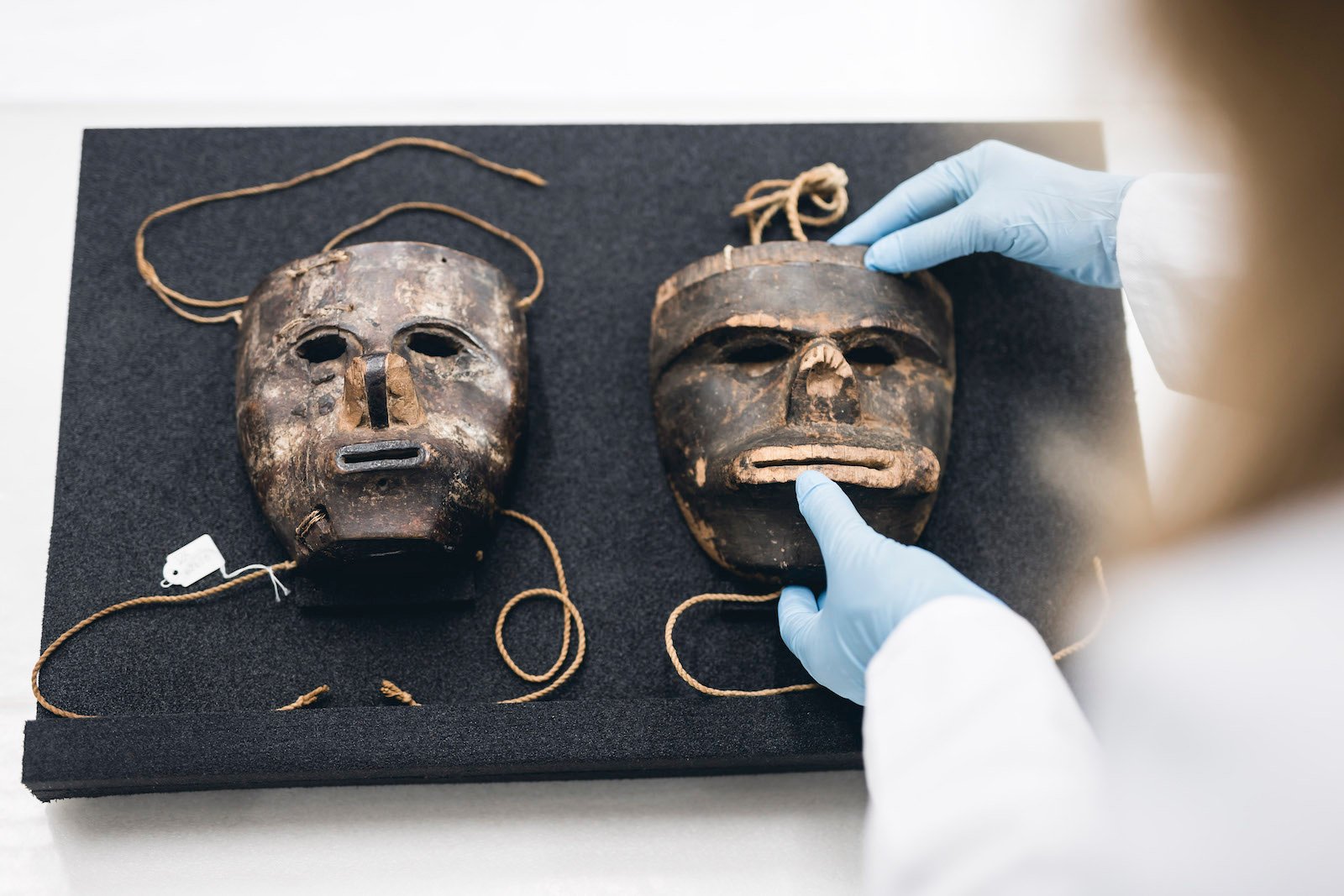
Germany has returned two sacred masks, bought from the indigenous Kogi people of Colombia, to the country’s leader. German president Frank-Walter Steinmeier called the move “part of a rethink of the way in which we treat our colonial past” during a ceremony in Berlin on Friday with Colombian president Gustavo Petro.
But the masks may cause health risks to anyone who wears them as intended, according to a report in the Guardian, which indicates that while held in the ethnological collections in Berlin, artifacts made of organic materials such as these were routinely sprayed with pesticides that can cause breathing difficulties and are suspected of causing cancer.
German ethnologist Konrad Theodor Preuss bought the 15th-century masks from the family of a deceased Kogi priest in 1915 for the collection of the Ethnological Museum of the Berlin State Museums.
“The Kalguakala [masks] are of total importance to us as they are sacred,” said Arregocés Conchacala Zalabata, a representative of the Kogi. “They are not a historical artifact; they are alive. With the masks, we perform ceremonies to connect and work with the spirit of the sun, the waters, the mountains and the world’s many species.”
The Guardian revealed that during the 19th and 20th centuries, the container holding the masks was regularly sprayed with the disinfectant and pesticide 1,4-dichlorobenzene. While Rudolf Parzinger, president of the Prussian Cultural Foundation, said the masks were “detoxified,” he added: “We still have some doubt over where they can be directly worn in front of the face.”
Such objects are never truly harmless after being treated with these chemicals, Stefan Simon, director of the Rathgen research laboratory, an institute connected to Berlin’s state museums, told the Guardian.
Unfortunately, Zalabata, the Kogi representative, told the Guardian that no one had warned his community about the danger from contamination through pesticides from wearing the masks.
“We’re going to continue using them,” he said.
More Trending Stories:
Is Time Travel Real? Here Are 6 Tantalizing Pieces of Evidence From Art History